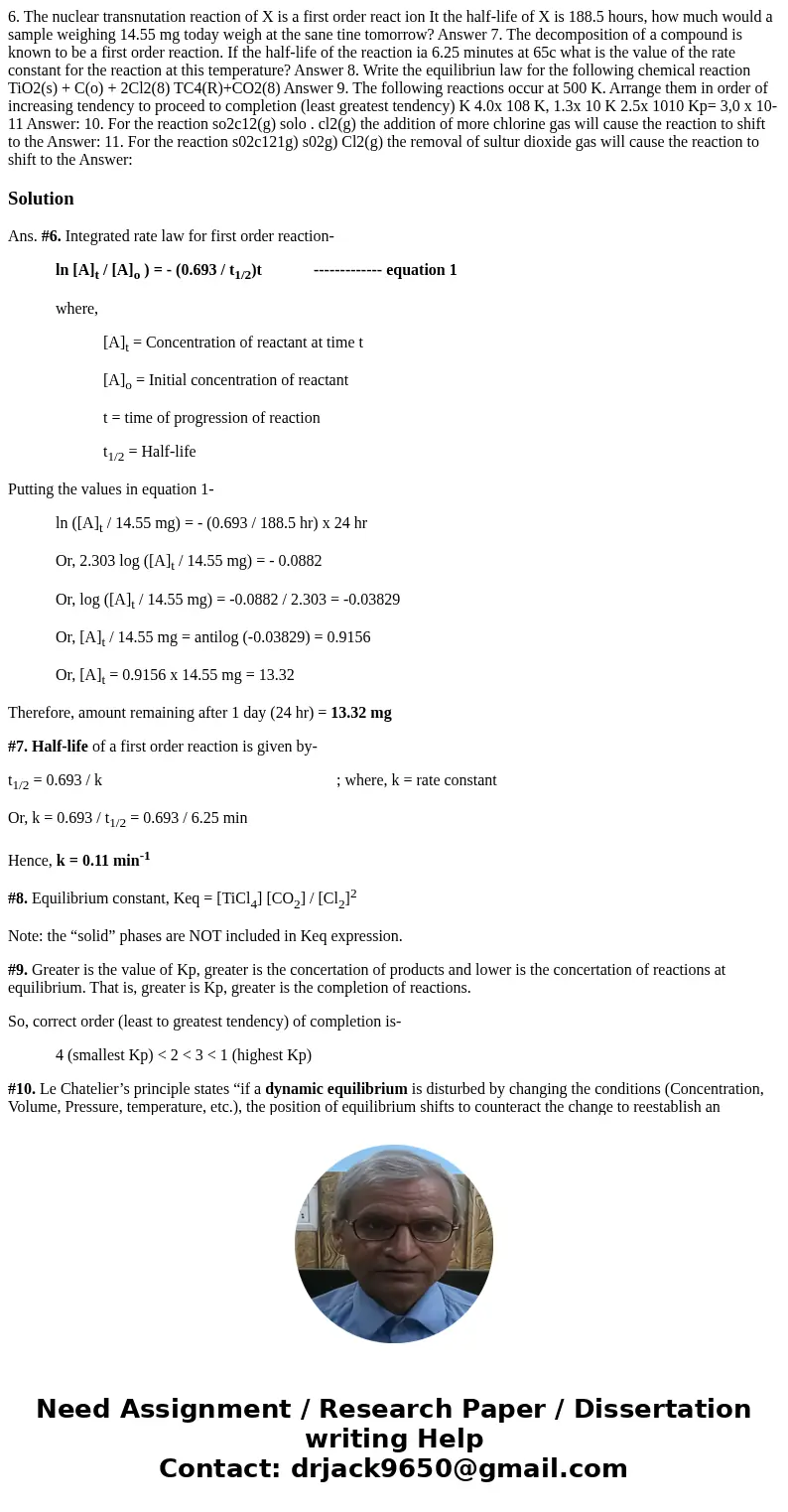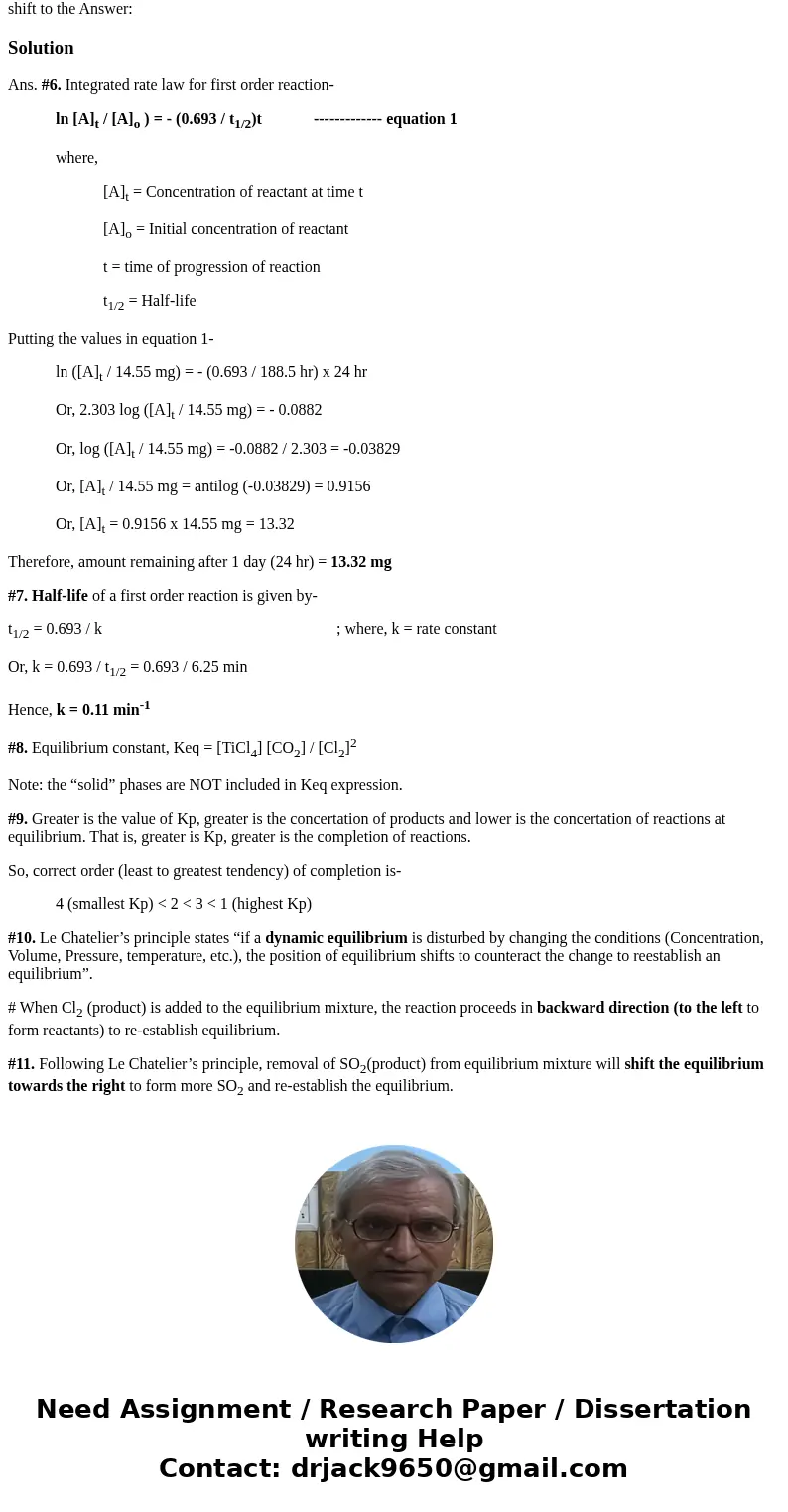6 The nuclear transnutation reaction of X is a first order r
Solution
Ans. #6. Integrated rate law for first order reaction-
ln [A]t / [A]o ) = - (0.693 / t1/2)t ------------- equation 1
where,
[A]t = Concentration of reactant at time t
[A]o = Initial concentration of reactant
t = time of progression of reaction
t1/2 = Half-life
Putting the values in equation 1-
ln ([A]t / 14.55 mg) = - (0.693 / 188.5 hr) x 24 hr
Or, 2.303 log ([A]t / 14.55 mg) = - 0.0882
Or, log ([A]t / 14.55 mg) = -0.0882 / 2.303 = -0.03829
Or, [A]t / 14.55 mg = antilog (-0.03829) = 0.9156
Or, [A]t = 0.9156 x 14.55 mg = 13.32
Therefore, amount remaining after 1 day (24 hr) = 13.32 mg
#7. Half-life of a first order reaction is given by-
t1/2 = 0.693 / k ; where, k = rate constant
Or, k = 0.693 / t1/2 = 0.693 / 6.25 min
Hence, k = 0.11 min-1
#8. Equilibrium constant, Keq = [TiCl4] [CO2] / [Cl2]2
Note: the “solid” phases are NOT included in Keq expression.
#9. Greater is the value of Kp, greater is the concertation of products and lower is the concertation of reactions at equilibrium. That is, greater is Kp, greater is the completion of reactions.
So, correct order (least to greatest tendency) of completion is-
4 (smallest Kp) < 2 < 3 < 1 (highest Kp)
#10. Le Chatelier’s principle states “if a dynamic equilibrium is disturbed by changing the conditions (Concentration, Volume, Pressure, temperature, etc.), the position of equilibrium shifts to counteract the change to reestablish an equilibrium”.
# When Cl2 (product) is added to the equilibrium mixture, the reaction proceeds in backward direction (to the left to form reactants) to re-establish equilibrium.
#11. Following Le Chatelier’s principle, removal of SO2(product) from equilibrium mixture will shift the equilibrium towards the right to form more SO2 and re-establish the equilibrium.


 Homework Sourse
Homework Sourse